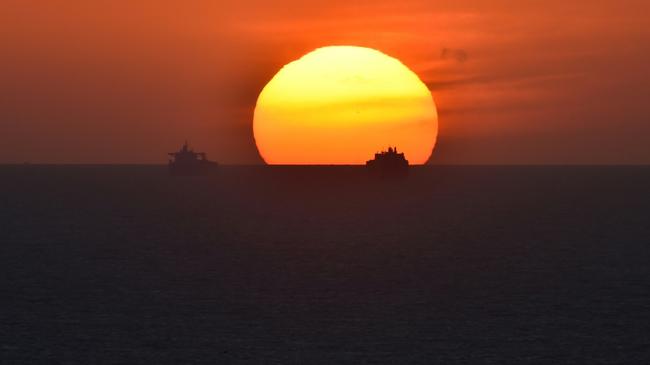IEA says risk of oil supply disruptions is limited
IEA says risk of oil supply disruptions is limited

The International Energy Agency said on Thursday the risk of oil supply disruptions due to the conflict between Israel and Hamas is limited but that it stands ready to intervene in markets if necessary.
The Paris-based agency, in addition to its analysis and advisory roles, coordinates the release of emergency stocks held by its 31 mostly advanced-economy member nations.
A weekend attack by Hamas on Israel, and Israeli's military retaliation, have left thousands dead and rattled oil markets, amid fears that other nations might intervene and possibly disrupt shipments in the Middle East.
The region accounts for more than one-third of the world's seaborne oil shipments.
"While the prospect that oil supply flows will be impacted currently remains limited, the deadly strikes prompted traders to price in a higher geopolitical risk premium," the IEA said in its regular monthly report.
"There has been no direct impact on physical supply," it added.
But with supply and demand on the oil market currently tightly balanced, the IEA said it "stands ready to act if necessary to ensure markets remain adequately supplied".
Oil prices jumped at the start of the conflict but have since eased as there was no immediate disruption to supply flows and other nations have not intervened.
Yet prices remain relatively high as a result of supply cuts by Saudi Arabia and Russia, with the IEA also warning it was beginning to see signs of demand destruction.
The oil market has for months been caught in a tug-of-war between concerns about supplies and demand as high energy prices, combined with interest rate hikes in most advanced nations to combat inflation, leave consumers squeezed.
- Fluctuating demand -
"There has been some evidence of large-scale demand destruction, especially in lower-income countries, like Nigeria, Pakistan and Egypt, and signs of accelerating declines within some OECD markets including the United States," said the IEA, referring to the OECD club of advanced economies.
Consumers in developing nations have been hit by the sliding value of their currencies relative to dollar -- in which crude oil is priced -- and often the removal of gasoline subsidies.
But gasoline deliveries in the United States also hit a two-decade low, the IEA noted, with many advanced nations set to begin seeing drops in demand due to the uptake of electric vehicles.
Nevertheless, global oil demand is still expected to grow by 2.3 million barrels per day (mbd) this year thanks to growth in China, India and Brazil, it said.
That is unchanged from the IEA's previous forecasts, but the agency lowered its forecast for oil demand growth next year to 0.9 mbd.
The IEA also warned of possible shortages of diesel in Europe this winter.
"Ten months after the EU embargo on Russian crude came into effect, European refiners still struggle to lift processing rates and diesel output," said the agency.
Europe will need to maintain high levels of imports, particularly from the Middle East but stringent winter quality specifications could constrain supply, it warned.
"It may take another mild winter to avoid shortages," said the IEA.
Diesel is a major fuel for passenger vehicles in Europe as well as for trucks.
- Russia oil earnings rise -
Meanwhile, Russian oil export revenues surged by $1.8 billion to $18.8 billion in September, the highest level since July 2022, the IEA said, as both volumes and prices rose.
The European Union, G7 and Australia introduced a price ceiling of $60 per barrel on Russian oil in December last year, to starve Moscow of much-needed revenue, but with limited success.
All Russian crudes traded at more than $80 per barrel in September, "well above the G7 price cap", said the IEA.
In added that Russian government revenues from oil in US dollars rose 24 percent month-on-month in September, to $10.6 billion but were down 7.0 percent from their level one year ago.
Meanwhile, the OPEC oil cartel in its monthly report revised slightly higher its forecast for Russian crude output in 2023, to an average of 10.5 mbd. That is a drop from around 11 mbd last year.
"It is worth noting that the expected contraction takes into account announced voluntary production adjustments to the end of 2023," said OPEC.
rl/gil


